Huittinen 作者: 来源: 发布时间:2021-10-14
一、所属省或是州,具体位置,人口,面积
Huittinen (Swedish: Vittis) is a Finnish city located in the province of Satakunta. The city belongs to the Pori region. The city has a population of 10,051 and an area of 539.59 km2, of which 6.95 km2 is water. The population density is 18.87 inhabitants /km2. Huittinen's neighboring municipalities are Kokemäki, Loimaa, Punkalaidun, Sastamala and Säkylä.
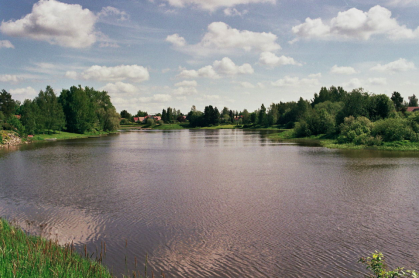
https://www.huittinen.fi/tietoa_huittisista/kaupunginjohtajan_tervehdys
https://www.huittinen.fi/palvelut/liikuntapalvelut
http://www.pahkaparatiisi.fi
二、自然地理
1.地理条件
The largest water body in Huittinen is the Kokemäenjoki River, which initially flows to the southwest, but turns northwest towards Poria in the municipality. It is joined by the main tributary Loimijoki and the smaller Punkalaitumenjoki and Sammunjoki. There are no more lakes in the Huittinen area, but instead there are extensive bogs in the northwestern part. The southern end of Puurijärvi and Isosuo National Park extends to Huittinen and the park's information center is in the former Karhiniemi school.
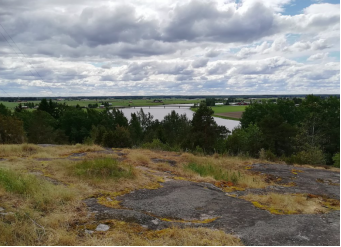
Huittinen is mostly flat in surface shape and the lowest areas are located along rivers in the central part of the city. The bedrock, which is mostly granodiorite in Huittinen, is not visible anywhere in the city. The highest hills, reaching more than 100 meters above sea level, are located in the south in the direction of Vampula. Well-known viewpoints are Ripovuori, Kymmenvuori and Korkeakallio. A ridge section runs through Huittinen, which comes from the northwest on the Kokemäki side and continues through Huhtamo to the Punkalaitumen side.
https://www.huittinen.fi/tietoa_huittisista/kaupunginjohtajan_tervehdys
https://www.huittinen.fi/palvelut/liikuntapalvelut
http://www.pahkaparatiisi.fi
2.交通情况
In terms of traffic, Huittinen is located in the middle of the triangle formed by the cities of Turku, Tampere and Pori. The Helsinki-Pori highway and the Tampere-Huittinen-Rauma highway, as well as the Tampere-Turku main road, intersect immediately near the center of Huittinen. Due to its location, Huittinen is a very busy crossroads for bus traffic. Express bus services carry more than 2,000 passengers daily through Huittinen in many different directions.
Huittinen is also known as a lively center for passenger and freight traffic and car trade. In terms of traffic, Huittinen is located in the middle of the triangle formed by the cities of Turku, Tampere and Pori. Near the center of Huittinen is the intersection of Highway 2 from Helsinki to Pori and Highway 12 from Rauma to Kouvola. The end point of the main road 41 leading to Aura is also in the same place. After its completion in the 1960s, the road junction quickly became known for several traffic accidents and was converted into an interchange already in 1967. At the time, Huittinen was also the second terminus of the main road 57 that took me to Toijala; Today, most of this road is the regional road 230 called Taikayönti, which runs through Punkalaitumen in Urjala.
Thanks to its location, Huittinen is a very busy hub for bus traffic. There are several express services to Helsinki, Turku, Rauma, Pori and Tampere every day. The current bus station was completed in 1965. Before Huittinen became a township (1972), Lauttakylän Auto was Finland's largest bus company in rural areas and Huittinen Bus Station was Finland's busiest rural bus station. With the slowdown in bus traffic, Huittinen's bus station has also become considerably emptied in the 21st century, and not all express services between major cities are even run in the city center.
There is no railway station in Huittinen, but in the area of the municipality - at the northern end of Kuukinmaantie - there is a 100-meter section of the Tampere-Pori train line. The nearest railway stations are in Kokemäki and Sastamala.
https://www.huittinen.fi/tietoa_huittisista/kaupunginjohtajan_tervehdys
https://www.huittinen.fi/palvelut/liikuntapalvelut
http://www.pahkaparatiisi.fi
三、经济发展和规模
The most employment-intensive industry is food further processing. The city also has major machinery, construction and bag companies and a number of other small industries. In terms of crop production, Huittis-type agricultural production has placed a strong emphasis on the production of special crops. Correspondingly, in livestock production, the focus is on pig and broiler production. The number of whit pigs is also nationally significant; it is the largest in Finland. The well-known food company Huittisten Lihapojat, which went bankrupt in 2001, was once one of the city's largest employers. The company employed about 200 people at the time. The river side gold mine is located in Huittinen. Polar Mining began mining the deposit in 2009
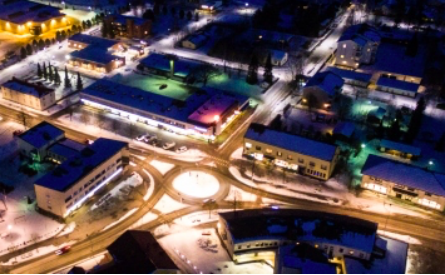
Huittinen is a city where trade is worthwhile, services play, culture flourishes and education bears fruit. The living environment of the city of Huittinen is close to people. With a population of around 10,200, the city offers all the services needed for daily life within walking distance of each other and parking does not incur any additional costs. The living environment for children is safe and clean and a high standard of living can be achieved without million-dollar mortgages.
The center of Huittinen, Lauttakylä, is the commercial and transport center of its economic area and employment area, thanks to numerous specialty shops and supermarkets. Food further processing is the most employment-intensive industry. Huittinen's agriculture is highly specialized. In addition, the city has major machinery, construction and bag companies, as well as a number of other small industry companies. The city is also known as a bustling center for passenger and freight traffic and car trade. The city of study also offers an exceptionally wide range of educational opportunities. Education is one of the most important priorities in the development of the city.
https://www.huittinen.fi/tietoa_huittisista/kaupunginjohtajan_tervehdys
https://www.huittinen.fi/palvelut/liikuntapalvelut
http://www.pahkaparatiisi.fi
四、产业特点/重点项目
Huittinen is Satakunta's third largest trade and tourism city, where you can find a wide range of services from general stores to specialty stores. Car shops, furniture, textiles, shoes, interior design and many other specialty boutiques serve the residents and tourists of the large economic area with a wide selection and a happy attitude. See the service map here!
Huittinen is also a food city. Food is produced here for the entire Finnish market. The most important raw materials are chicken and pork, open-air vegetables, berry products and cereals. Food experiences are offered by many restaurants and catering services, the trump card of which is nearby, clean food.
https://www.huittinen.fi/tietoa_huittisista/kaupunginjohtajan_tervehdys
https://www.huittinen.fi/palvelut/liikuntapalvelut
http://www.pahkaparatiisi.fi
五、风景名胜,景点( attractions)
1. CHURCH OF CHAIRS
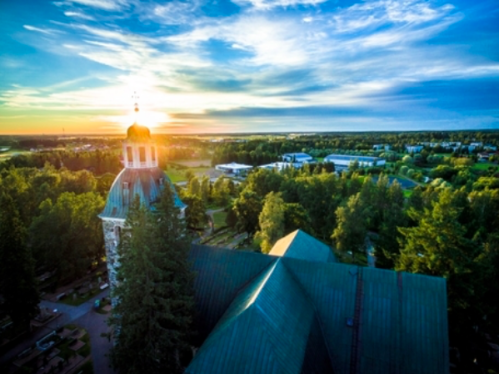
The church is on a hill called Karsatinmäki. The name is older than the church, it indicates that there has been a pew, or pagan site, in the past. Medieval churches were often built in such places elsewhere as well, as the Pope, in his letter of 1229, called for the introduction of pagan places of worship for the church.
Originally, the church, like medieval churches in general, was rectangular and facing east. It was originally two-vaulted, meaning it comprised the present middle part and eastern spindle. At that time the altar was on the end wall of the present eastern spindle. The entrance was at the west end, but when a weapons room was built on the south wall in 1647, the entrance also came through it.
As late as the 18th century, it was customary to bury priests and other notable persons under the church floor. In Huittinen this method ceased to be used in 1794. The most famous of those buried in Huittinen Church is probably the younger of Count Nils Idman, who served as the pastor of Huittinen in 1749-1790 and became known especially for his linguistic research.
https://www.huittinen.fi/tietoa_huittisista/kaupunginjohtajan_tervehdys
https://www.huittinen.fi/palvelut/liikuntapalvelut
http://www.pahkaparatiisi.fi
2.PAHKAPARATIISI
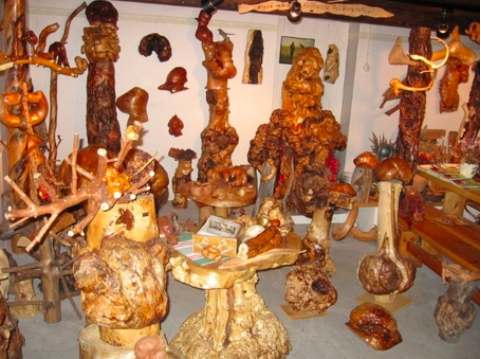
An exhibition of biodiversity and specialties, awarded by the President of the Republic and also named the Pearl of Tourism, with about 4,250 different objects. In addition to the paper exhibition, there is a café and a souvenir shop in paradise. Huittinen Huittinen's wicked paradise brings out the incomprehensible multi-manifestation and surprise of the forests. There are shapes in the trees that you can't even imagine without seeing. The collection is astonishingly extensive. The strangeness of the trees has filled my engine room, my empty birthplace, the four-cube spruce memorial temple I built, and the gallery building I built around Finland's largest trunk. This largest trunk in Finland grew to a height of four meters and is four meters in circumference.
The exhibition consists of 300 letters and 75 numbers shaped by nature. They include an alphabet, numbers, nine words on the wall, the names of future guests, and a daily updated diary. Visitors write a lot of stories thanks to the jacket, which I have written clean for over a thousand. So it has been said, for example: You have been given an extra instinct and power from somewhere above that you can show the world the beauty of biodiversity. This abundance cannot be explained otherwise. Those stories are also important, arousing visitors to realize the beauty of nature and teach them to respect nature. For we are all part of nature and its diverse beauty. This is what radio journalist Niilo Ihamäki wrote in 1993 when making a program for forest radio.
https://www.huittinen.fi/tietoa_huittisista/kaupunginjohtajan_tervehdys
https://www.huittinen.fi/palvelut/liikuntapalvelut
http://www.pahkaparatiisi.fi
3. Huittisten museum
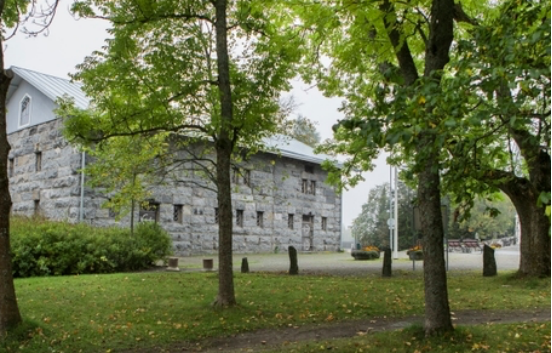
The Huittinen Museum presents local everyday life mainly from the 18th-18th centuries and the early 20th century. Of course, both newer and older objects are on display. The museum has two nationally significant collections that cannot be seen anywhere else; President Risto Ryti collection and art collection of professor, sculptor Lauri Leppänen.
First round, Rhizome foot table at the museum's main exhibition. 1st floor. The first floor features household and interior items and textiles. The entrance hall has a brief introduction to the prehistory of the area. You can see e.g. an exact copy of the famous Moose Head Sculpture found in Huittinen Palojoki. The original sculpture, estimated at 7,000 years old, can be seen at the Finnish National Museum in Helsinki. There is also a small exhibition in the lobby about Josefiina Eufrosyyne Savijoki, or Siina Rinte, about the Hittite-style kangaroo. In the locality he was known as Momman Sinana.
On the second floor, e.g. old agriculture and the cleaning knife. Permanent exhibition. 2nd floor.articles moving objects. There is also a collection of about 600 knives, which includes e.g. numerous cleanup knives during the station wars. An exhibition presenting the stages of President Risto Rytti's life and the museum's changing exhibition space are located on this floor.
On the third floor, a professor is introduced Lauri Leppänen's art collection, which includes Leppänen sculptures, reliefs and medals throughout his career from the 1920s to the 1970s. A specialty on this floor is Huittinen's Vampula in its day a complete log building brought to the museum, a former watermill.
https://www.huittinen.fi/tietoa_huittisista/kaupunginjohtajan_tervehdys
https://www.huittinen.fi/palvelut/liikuntapalvelut
http://www.pahkaparatiisi.fi
六、历史文化
1.历史
In 1892, Kauvatsa was separated from Huittinen as its own municipality, which was merged into the neighboring municipality Kokemäki in 1969, and Keiky in 1919, which was merged with Kiika into Äetsä municipality in 1981. Vampula has also been part of Huittis before, and was reunited with Huitti in early 2009. In addition to these, Huittinen's former neighboring municipalities are Alastaro, which was merged with Loima in 2009, and Köyliö, which was merged with Säkylä in 2016. Huittinen became a township at the beginning of 1972, and in connection with the closure of townships in 1977. The coat of arms of Huittinen was designed by Erkki Honkanen and strengthened in 1953.
In 1904, in the area of Huittinen, Palojoki, one of Finland's most famous antiquities was discovered, a deer-shaped percussion weapon dating back to the Stone Age. It is deposited in the National Museum. In addition to the finds, there is a comb-ceramic residence in Korkeakoski and a younger burial ground in the village of Sammu, as well as some cemeteries. Researchers have concluded that Huittinen received its first inhabitants mainly from the northwest, downstream of the Kokemäenjoki River. Huittinen was mentioned as a parish priest in 1414. The greystone church of Huittinen was built in the late 15th century. The church burned down in 1783 and a high tower was added to it during the renovation. On flat terrain, the tower is visible far into the surroundings. Before the stone church, Huittinen had a wooden church, possibly two.
There were 300 farmhouses in the Suur-Huittinen area at the beginning of the 16th century, but at the end of the same century there were another hundred deserted houses. During the great famine years of 1696–1697, more than 800 inhabitants of the parish are reported to have died. In his travelogue from 1738 to 1741, statistician Ulrik Rudenschöld gave a rather positive picture of Huittinen's agriculture and suggested channeling the Kokemäenjoki River and establishing a town in the village of Karhiniemi. The Kokemäen River was cleared in the late 18th century to prevent flood damage. Juusela's estate in the village of Nanhia has been considered the home of the Juslenius family. The most famous member of the family was Bishop Daniel Juslenius. The pastor of Nils Idma, a pastor known for his economic and scientific hobbies, also came from the same house. Archbishop Erkki Kaila's father Jonatan Johansson served as Huittinen's parishioner in the 1860s.
Huittinen's city center, Lauttakylä, became the most important land transport hub in southwestern Finland long before the car era. The railways were far away and the waterways were not navigable over long distances. However, the passenger ship from Lauttakylä runs along the Kokemäenjoki River to the Kyttälä railway station on the Tampere – Pori line, right from the completion of the line until the 1930s. The ferry village was born at the crossroads of the old Helsinki – Pori and Turku – Tampere roads, where the Loimijoki was crossed by ferry. Bus traffic from Lauttakylä in all directions began in the early 1920s. After the last wars, the migrants of Pyhäjärvi (Vpl) and Sakkola were inhabited in Huittinen.
https://www.huittinen.fi/tietoa_huittisista/kaupunginjohtajan_tervehdys
https://www.huittinen.fi/palvelut/liikuntapalvelut
http://www.pahkaparatiisi.fi
2. 文化体育
The cultural offer is of a high standard and diverse, and it can be enjoyed, for example, in the Risto Ryti hall with more than 400 seats. Plenty of indoor sports facilities also make it possible to practice most ball games. Huittinen has numerous active cultural and sports actors. The Huittinen region's music college, play groups, sports clubs and various collaborative productions offer experiences for both the townspeople and the residents of the entire region. Risto Ryti Hall provides a high - quality setting for cultural events. It is easy to get together in Huittinen. The location is central and the services varied. Even for large events of companies and organizations, there are high-quality facilities and services in the Royal Education and Culture Center. In addition, local restaurants offer smaller cabinets for use by a conference party, for example.
Services are designed with the services of associations and private service providers in mind. The city has sports groups in the swimming pool, gym and outdoor areas. Youth and sports services ensure that services are available to all age groups. Applied sports are organized in cooperation with the various branches of the city's administration. In the development of health sports services, co-operation is established with the health center, local companies, the Hundred College, pensioners' associations and village associations. The sports areas of the city of Huittinen offer diverse opportunities for sports. There are many different indoor and outdoor fields in the city, both for the activities of clubs and associations and for voluntary sports.
https://www.huittinen.fi/tietoa_huittisista/kaupunginjohtajan_tervehdys
https://www.huittinen.fi/palvelut/liikuntapalvelut
http://www.pahkaparatiisi.fi
七、其他信息
The authority responsible for waste management in Loimi-Hämeen Jätehuolto Oy's co-operation area, the City of Forssa Waste Board, approved the joint municipal waste management regulations at its meeting on 12 June 2018. The regulations apply to the cities of Akaa, Forssa, Huittinen, Loimaa and Somero, the municipalities of Eura, Humppila, Jokioinen, Kosken Tl, Säkylä, Oripää, Punkalaitumen, Tammela, Urjala and Ypäjä and the city of Sastamala with the exception of the Mouhijärvi and Suodenniemi areas. The regulations will enter into force, notwithstanding a possible complaint, on September 1, 2018, with the exception of new separate collection obligations, which will enter into force on January 1, 2019.
The purpose of waste management is to promote the recycling of waste and to prevent the danger and harm caused by waste to both health and the environment. Loimi-Hämeen Jätehuolto Oy takes care of the practical arrangements for waste management, such as recycling points and the operation of waste treatment plants. www.lhj.fi (see also the opening hours of the Huittinen waste station and the waste transport companies in the Huittinen area on the website).
The Huittinen collection point currently serves as an eco-eco-point, meaning that only free household, agricultural and forestry waste is accepted there. The collection point is to be upgraded to a waste station, where it will be possible to receive e.g. furniture and small consignments of sorted construction waste. The upgrade work will be affected by the changes introduced by the Renewable Waste Act, on the basis of which the necessary measures will be taken.
https://www.huittinen.fi/tietoa_huittisista/kaupunginjohtajan_tervehdys
https://www.huittinen.fi/palvelut/liikuntapalvelut
http://www.pahkaparatiisi.fi
八、联系方式
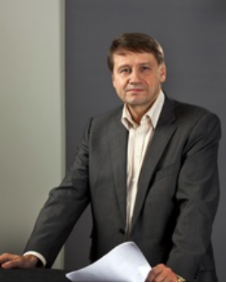
Town manager: Jyrki Peltomaa
Phone: 02 560 4111
Email: kaupunki@huittinen.fi
Address: Risto Rytin katu 36 32700 HUITTINEN
https://www.huittinen.fi/tietoa_huittisista/kaupunginjohtajan_tervehdys
https://www.huittinen.fi/palvelut/liikuntapalvelut
http://www.pahkaparatiisi.fi
